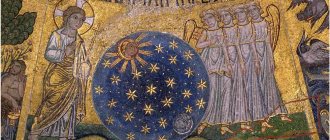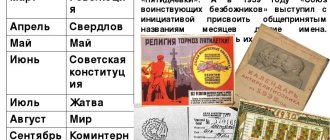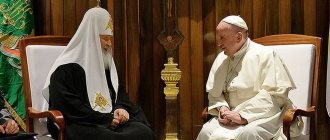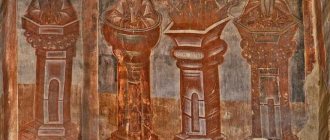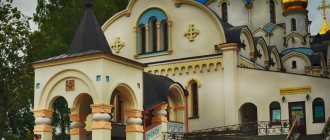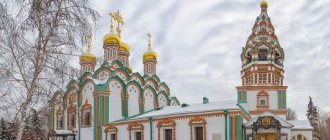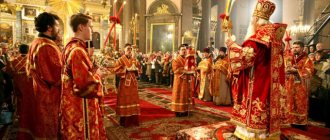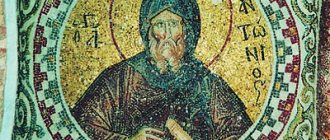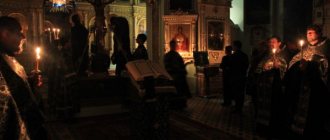"Save me, God!".
Thank you for visiting our website, before you start studying the information, please subscribe to our Orthodox community on Instagram, Lord, Save and Preserve † - https://www.instagram.com/spasi.gospodi/. The community has more than 60,000 subscribers. There are many of us like-minded people and we are growing quickly, we post prayers, sayings of saints, prayer requests, and timely post useful information about holidays and Orthodox events... Subscribe. Guardian Angel to you!
Saint Francis of Assisi is a great saint, monk, missionary, founder of the mendicant order of Franciscans, named after him. It marked an important turning point in the formation of the ascetic ideal, which became one of the most important stages in the formation of a new era in the history of Western monasticism.
Life of Francis of Assisi
Francis of Assisi (Giovanni Francesco di Pietro Bernardone) was born in the small ancient city of Assisi (Italy) into the family of a wealthy tradesman. The boy's period of study was quite short. And at the age of 14, by decision of his father, he began to help him in trading. Francis was a favorite of young people and spent his free time in carefree youthful fun.
For many years, the young man dreamed of becoming a real knight. And after going to Apulia, where he received a vision of God, he turned to the Lord. This event marked the beginning of the saint's conversion. Another important moment of this was his chance meeting with a leper: seeing in him the face of the suffering Christ, he hugged the suffering man. Since then, the saint often helped lepers and made pilgrimages.
Helping his father in trade, Francis began to distribute the proceeds to the poor, which led to a conflict with his relatives. For this, he publicly disinherited the young man.
Dreams of chivalry still attracted the saint and little by little began to come true. He took part in the war, but was captured and spent a whole year in prison, where he became very ill. It was a time to reflect on my purpose. And the young man saw him in mercy and compassion.
The best article for you, go to: Venerable Prokhor of Pechersk
After that, he wore a tunic in the shape of a cross, helping the sick and lepers, and also began preaching work. Francis independently restored three churches.
Very quickly he gained followers, together with whom they drew up the charter of the brotherhood and received its approval by the Pope himself. It was during this visit to Rome that the saint was officially ordained a deacon.
The saint and his brothers more than once went to the Saracens in order to convert them to Christianity, and visited other countries as missionaries.
An important event in the life of Francis was the receipt of stigmata - wounds reminiscent of the traces of the Lord's suffering:
- on hands;
- legs;
- in the side.
Knowing that death was approaching, the saint expressed a desire to transfer him to the “cradle of the Order” - the chapel of the Mother of God of the Angels, where he humbly rested. And two years later he was solemnly canonized.
The life of Francis of Assisi, as well as his role in church culture, is truly unique and original, as evidenced by his artistic depiction: in a brown monastic robe with a belt of three knots, which are symbols of the vows he took: poverty, obedience and chastity. He is also the only Franciscan saint who has the stigmata (wounds of Christ).
Historical context of events
If in this world it was possible to give an unambiguous and accurate answer to any question, human existence would be simple and easy.
However , the world is much more complex and diverse than we would like, and this fact is confirmed by the biographies of religious figures.
As a rule, each ascetic exists in the context of his time, although he relies on eternal truths and the greatest source that one can imagine - the Lord God.
Informative! What is considered a mortal sin in Orthodoxy: list
Existing in the context of time requires certain behavior and preaching. Just as people choose different clothes for different situations, holy ascetics in different eras talk about different things and act in different manners.
Saint Francis appeared in an era of peculiar flourishing of Christian culture:
The years of persecution have passed, when holiness was achieved through severe torment for Christians; administrative resources have developed, and many countries have adopted Christianity as their own basic ideology; monasteries have become not just pillars of spiritual development, but also a political-economic element with an abundance of resources and connections.
It was the final item from this list that most worried St. Francis. He understood the need for some reformation of the religious institution and established traditions, which distanced monasticism from spiritual service and brought it closer to the purely utilitarian and practical aspects of this world.
Note! An ancient lifetime image of the saint has survived to this day, which conveys his appearance with photographic accuracy.
The basis for the saint’s reformation was the idea of poverty, which stems from the thought of renunciation of the world. A monk who strove to become like Christ always took a vow of poverty, but at the same time the monasteries as such became richer, and thanks to this the abbots acquired a certain social significance with all the ensuing consequences.
Within these conditions, Francis of Assisi acted in a very original way and created a religious order, which was based on the following postulates:
The missionary and preaching activity of a monk who does not completely withdraw from the world, but achieves inner detachment, continues to remain a useful part of this world. Poverty is not something negative, a refusal of goods, but, on the contrary, is a positive virtue, which represents following an example Christ. Voluntary poverty can help everyone, rich and poor, since in any case it can lead to the Gospel image of perfection.
In fact, these religious ideas were preceded by other similar ones. The most famous is the Waldensian movement from the city of Lyon.
Interesting! The meaning of the icon of St. Nicholas the Wonderworker.
The Waldenses (probably named after their founder, Pierre Waldo) preached poverty and renunciation of wealth. However, they had slightly radical and generally not particularly useful views. Waldo's followers wanted to take everything from the rich in order to give it to the poor and make people equal. The destructive nature of this idea is perhaps understandable and does not require additional explanation.
In turn, Francis of Assisi offered his followers a more harmonious path of spiritual development. The saint did not propose to destroy, destroy or take away anything. Francis' path consisted of spiritual transformation, through which the transformation of the external world was also achieved.
The rise of Christianity during the time of Francis of Assisi
A little biography
In order to better imagine Francis of Assisi, let us briefly describe his biography. The future saint was born in 1181 into a more than wealthy family.
This is interesting! Francis's father was the largest and richest merchant in the city of Assisi and raised his son in love for ambition and material wealth.
Using the example of a saint, we can again see how amazingly people in complete prosperity choose absolute renunciation and service to the Lord. The saint from Assisi could have all the material benefits he wanted - this is no exaggeration, since he belonged to the richest family. Nevertheless, Francis, raised in luxury, abandoned material pleasures for higher goals.
The lives of the saint, created by biographers who knew Francis himself, have survived to this day. However, information about him is not always accurate and is often supplemented by exaggerations and various folk legends.
Good to know! The miraculous life of St. Mary of Egypt: who is it and how does it help.
Still from the film “Francis of Assisi”
Note! According to legend, Francis had stigmata on his body, that is, Christ-like wounds that appear on saints. The presence of stigmata has been recorded many times throughout the history of the church.
In addition to the saint’s prayer, the magnificent text of the “Song of the Sun”, other prayers, rules for monks, sermons, letters and much more have been preserved. Thanks to this, the teachings of St. Francis can illuminate the path of modern believers.
Church of Francis of Assisi
One of the grandiose masterpieces of architectural art, which bears the proud name of Francis of Assisi, is located in Vienna (Austria). The church, made in the neo-Romanesque style, was built on the banks of the Danube. And this construction lasted for 15 years.
The best article for you, go to: The icon “The Savior Not Made by Hands” helps
And today the temple, which has a great and interesting history, is a place of pilgrimage for many people from all over the world. After all, this is not only beauty imprinted in stone, it is a symbol of unfading faith and eternal service to the Lord.
Orthodox icons and prayers
For Orthodox women with all the questions they have
I read information that he is revered and loved by almost everyone and even atheists respect him.
Well, like, it’s like in your own words after the main prayers. i.e. sometimes I used this prayer instead of my words
Make me an instrument of your world
Where there is hatred, let me sow love,
Where there is resentment there is forgiveness,
Where doubt is faith,
Where there is despair there is hope,
Where there is sorrow there is joy.
Make me not so much
I sought consolation as much as I consoled;
I did not so much seek understanding as understand;
He didn’t strive so much to be loved as to love.
For in giving we receive,
By forgiving, we ourselves receive forgiveness, and
By dying we are born to eternal life
“Considering himself to be equal to God, the Assisi man later said: “I am not aware of any sin that I could not atone for through confession and repentance.” How far he moved away from God can be understood at least from a comparison of this phrase of his with the spiritual revelation of Abba Dorotheus: “. the more one approaches God, the more one sees oneself as a sinner”; on the contrary, the more one moves away, the purer one becomes for oneself, not noticing one’s own sins.”
The attitude of monks to living nature
Francis of Assisi defended the value of nature, preached compassion and mercy towards all things. The ascetic read his sermons to all living things, including animals and birds. In all of nature, he saw the reflection of its Creator, and called all living beings his brothers and sisters.
Saint Francis believed that in every natural phenomenon there is a Creator
Love for animals pushed the Saint to a fundamental refusal to kill them, although he had not previously been a vegetarian. He tried to rescue birds and animals from captivity; many of them did not want to leave the man who saved them and remained close to Francis. So, the rescued eagle stayed to live with the ascetic and woke him up in the morning.
The saint fed insects with honey, removed earthworms from the road, saved lambs from slaughter, and hares from traps. The whole world, in the understanding of the Saint, was one family, united by love for its Father and Creator. The righteous man saw an element of holiness in any of the animals and emphasized the presence of the Creator in the diversity of all living forms.
He was firmly convinced that nature was not created for man, but had its own value. Therefore, human relations with nature should be devoid of the principle of consumerism and be based on interaction and mutual respect.
Interesting to know! Because of such beliefs, St. Francis is considered the patron saint of environmentalists. They pray to him if any animal needs help.
Architecture
The building of the Church of San Francesco looks like a classic single-nave basilica, endowed with a “T”-shaped silhouette.
At the same time, the lowest floor is the tomb containing the remains of Francis of Assisi, the Lower Church serves as the second underground floor, and the luxurious Upper Church crowns the building. The entrances to the above-ground and underground tier are adjacent to the platforms.
The rows of arches decorating the church from the north give the snow-white building a special lightness. Numerous details of the external facade of the temple, pointed portals, and elongated elements indicate a Gothic architectural style, in which the influence of Italian traditions is also felt. In other words, visitors are presented with a Gothic style, devoid of a gloomy background.
Crypt
The entrance to the tomb of St. Francis is in the nave of the Lower Church. The stone tomb is hidden under the central altar. There are 4 niches carved into the walls of the crypt in which the ashes of the saint’s disciples are kept: Angelo Tancredi, Masseo, Rufino, Lione. There is an underground tunnel leading to the crypt. Throughout the history of the church, this entrance was banned for a long time, and then began to function again.
The crypt itself has minimal decoration, which it received in 1932. Before this, there were attempts to give the tomb a more solemn appearance, which, however, contradicted the concept of renunciation of luxury by Francis and his order.
Lower Church
The premises of the Lower Church took on a well-kept appearance in the 70s of the 13th century. The structure of the underground tier is as follows: a central nave surrounded by chapels. The nave was painted by an artist now known as the Master of St. Francis. The master painted 10 paintings, 5 of them illustrate the torment of Christ, the other 5 frescoes are dedicated to the life of St. Francis. The vaulted ceiling of the nave looks truly mesmerizing - it is covered with blue paint, on which the stars twinkle in gold.
St. Martin's Chapel
The chapel, dedicated to the early Christian saint Martin of Tours (lat. Martinus), who lived in the 4th century AD, was entrusted to the care of the artist Simone Martini. Over the course of 2 years, from 1317 to 1319, the master painted frescoes in the chapel dedicated to the miracles of St. Martin. There were also 4 paintings depicting royalty surrounded by saints.
Chapel of Mary Magdalene
The inspiration for the creation of the chapel dedicated to Mary Magdalene is considered to be Bishop of Assisi Teobaldo Pontano. The chapel was built at the beginning of the 14th century, and its main value is the frescoes by Giotto. Six panels depict the saint during the coming of the resurrected Jesus, the resurrection of Lazarus, in conversation with the Bishop of Pontano.
The most dramatic painting is considered to be “Noli me tangere!” ("Dont touch me"). The revived son of God forbids people to touch him, despair and torment are visible throughout Magdalene’s appearance, she does not believe her eyes.
Transept
The crossbar of the “T”-shaped structure of the Lower Church was designed in several stages. An unknown artist, the so-called master of St. Nicholas, Giotto and his students, as well as Cimabue, worked on the transept throughout the 13th and 14th centuries . The frescoes depict the birth and childhood of Jesus, the escape into Egypt, and the Crucifixion. The painting “Madonna with Saint Francis” by Cimabue is especially highly valued; it is considered to be the best example of the master’s work.
Another master who contributed his hands to the design of the underground tier of the temple is Pietro Lorezetti. His work can be seen in the south wing of the transept. The frescoes, dated 1320, are called the “Passion Cycle”. They, in Lorenzetti’s characteristic expressive manner, depict the torment and execution of Christ. The crucifixion scene is filled with special depth, thanks to the deep play of colors and elaboration of faces.
Chapel of John the Baptist
The small chapel adjacent to the transept is famous for the amazing fresco by Lorenzetti, Madonna dei Tramonti . The face of the Mother of God and Child is painted on the wall opposite the window. At sunset, the sun covers the fresco with golden light, which received the second name “Madonna of Sunset”.
Apse
The apse of the Lower Church is decorated with a main altar made of a single piece of marble. The papal altar is surrounded by numerous arches executed in the Gothic style. The wooden choir was installed in the 15th century; the frescoes decorating the apse vaults were significantly damaged in the 17th century.
Nevertheless, the paintings of the four sails of the vault, united by the common name “Paradise Vault,” have survived to this day. The ceiling wedges are decorated with allegorical images of Chastity, Obedience, Poverty. Three virtues were cornerstone for Saint Francis, depicted on the 4th sail. The authorship of the paintings was attributed to Giotto di Bondone, as well as to his student, who received the nickname “Master of Sails”.
Upper Church
The premises of the Upper Church harmoniously combine Gothic architecture and numerous frescoes that decorate the vaults and walls of the basilica.
Rows of stained glass windows allow sunlight to enter the temple, bringing life to the biblical paintings.
Franciscan cycle. Frescoes by Giotto di Bondone
The most ambitious work on decorating the Church of St. Francis is considered to be a cycle of 25 frescoes performed by Giotto and his students.
Pictures of the New Testament did not appear on the ceilings and walls of the temple overnight. In 1282, Giotto first began work, at that time still as a student of Cimabue. The brush of a 25-year-old master inspired the wall panels in the longitudinal nave of the Upper Church.
Not only the Bible was used as supporting material for the frescoes, but also the biography of Francis of Assisi - the book “Legenda Maior”. Scientists, as well as ordinary people, note the unprecedented beauty and depth of drawing of Giotto’s frescoes.
The young master really made a revolution in his business: he developed a new composition of paints and painted pictures on wet plaster. The artist did not limit himself to two-dimensional perception, rejecting the standard framework of fresco art.
The cycle of Giotto's frescoes is distinguished by its colorful and simple subjects, which invariably endear visitors to the temple. Historians note that the paintings depict real corners of medieval Assisi, as well as real people, with a high degree of accuracy.
In the 90s of the 13th century, Giotto and his masters painted most of the frescoes on Franciscan themes. Di Bondone himself limited himself to drawing the key figures, and also took up the design of the wall and vault above the entrance to the Upper Church (The Ascension of Christ and the Descent of the Holy Spirit).
Code of Fathers
Close to 1300, Giotto began painting the vault of the temple; images of the four Church Fathers were painted on it: Gregory, Jerome, Augustine, Ambrosius. The holy fathers are depicted surrounded by their assistants, busy with the affairs of the church. The master’s love for small details and realistic drawing of surrounding objects are striking.
Transept
Much of the western transept is decorated with frescoes by Cimabue, painted throughout the 1380s. The master completed 4 large paintings using lead-rich paints. Over time, the colors darkened and the frescoes lost their integrity.
Nave
The upper church previously had a nave, which stole a cycle of 32 frescoes illustrating the New and Old Testaments. Large-scale paintings were painted by masters of church painting: Jacopo Toritti and Pietro Cavallini. A powerful earthquake in 1997 damaged the building of the Temple of San Francesco in Assisi, and the work of medieval artists was lost.
Bell tower
On the south side of the basilica there is a bell tower about 60 meters high, built in 1239.
The snow-white pillar is crowned by an open belfry, decorated with arches. It houses 7 bells, the largest weighs 51 tons and is named after Francis.
All bells are electrically driven, since the smallest of them weighs 4 tons. The Temple of San Francesco in Assisi, with the ringing of its mighty bells, summons the flock from the most remote corners of the city.
What does a saint help with?
Saint Francis has become an example for many Christians of different classes, who see in him a worthy imitator of Christ.
People turn to him with prayer on different occasions:
- in case of serious illnesses that cause enormous suffering;
- to strengthen faith and spirit in difficult times of life;
- about protection from temptations;
- to establish peace and understanding with loved ones.
Artists who create musical, literary and artistic works also turn to Francis of Assisi with prayer.
Reading rules
In order for a saint to respond to an appeal and come to the rescue, it is necessary to properly tune in to prayer. Since Francis of Assisi himself helped the poor and suffering all his life, it is worth giving alms to the needy, of whom there are always many near the walls of churches. Prayer is offered at any time of the day, but it is better to do it in the morning, before eating, or before going to bed. Since the prayers addressed to the prophet are not long, it is worth learning them by heart and trying to understand every word spoken.
The priests also recommend having an image of St. Francis at home, which can be purchased at the church store. Before the ritual begins, a lamp or church candles are lit to set the mood. They say the text three times with a short break, not forgetting to thank the saint for his help at the end of the ritual.
If a woman offers prayers, she must cover her head with a headscarf and wear modest clothing appropriate for the occasion. Even if the saint does not immediately respond to requests, you should not lose heart, you must continue to pray with faith and wait for an answer.
Other prayers usually recited along with the Peace Prayer
Along with the prayer “ Lord, make my hands a continuation of Your Peace ,” excerpts from his other Christian hymns and chants are usually included among the most important prayers of the saint. This:
The saint’s first prayer appeal to his order (“allow us, the unfortunate, to act according to Your will, to do what You want, and to always want what You want”). The so-called “Prayer before the Crucifixion” - “illuminate the darkness of my heart and give me true faith, clear hope and perfect love, understanding and knowledge...”
Missionary activities of the order during the Crusade
In 1219, the ascetic went as a missionary along with the Fifth Crusade to the Saracens, wanting to convert the Egyptian Sultan to the Christian faith, which, however, he failed. Despite this, Francis achieved the respect of the Sultan and received a safe conduct from him. The monks of the order founded a monastery in Jerusalem to protect the Holy Sepulcher. The protection of the Holy Land forever remained the work of the Franciscan Order.
At first glance, the Crusade turned out to be unsuccessful for the ascetic. Francis went there with the goal of preaching the Gospel to the Saracens, but he himself turned out to be a simple pilgrim. However, he was the first to bring true Christianity, a living image of Christ and a willingness to die for one’s neighbor into the tents of Muslims.
